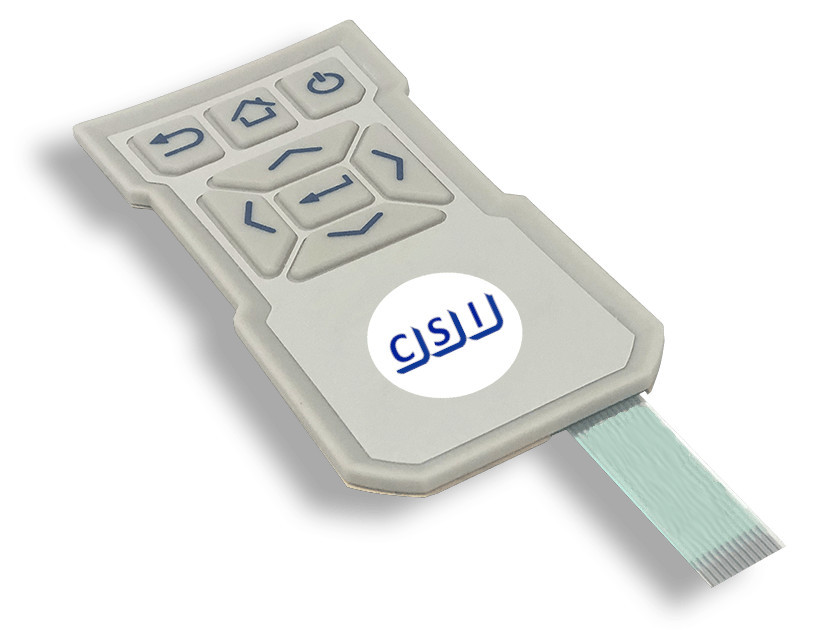Silicone Rubber Explained - Part I
Silicone rubber is an elastomer (rubber-like material) composed of silicone (itself a polymer) containing silicon together with carbon, hydrogen, and oxygen. Silicone rubbers have become widely used in the keypad industry, and there are multiple formulations. Part I of our Silicone Rubber Series will detail these formulations.
Silicone rubbers are often one- or two-part polymers, and may contain fillers to improve properties. Typically the silicone rubber contains properties called “Organosiloxanes Polymer” which have originated from its unique molecular structure that can carry both inorganic and organic rubbers. Due to the Si-O bond of Silicone Rubber and its inorganic properties, Silicone Rubber is superior to ordinary organic rubbers in terms of heat resistance, chemical stability, electrical insulating, abrasion resistance, weather ability and ozone resistance etc. The silicone rubber compounds are used in various ways of application such as rubber keypads, industrial rolls, wires, thermal conductive pads, medical products, kitchenware, etc.
With these unique characteristics, silicone rubber has been widely used to replace petrochemical products in various industries like aerospace, munitions industry, automobile, construction, electric and electronics, medical and food processing industry. Recently, these scopes of silicone applications have been expanding at a great speed by the high demand of industries that require a more reliable elastomer.

HTV Silicone Rubber
Silicone Rubber is classified into HTV Silicone Rubber (High Temperature Vulcanization Silicone Rubber) and RTV Silicone Rubber (Room Temperature Vulcanization Silicone Rubber) by its curing temperature. Also, HTV Silicone Rubber is divided into Millable Type Silicone Rubber and Liquid Type Silicone Rubber by its degree of polymerization.
Millable Type Silicone Rubber (High Consistency Silicone Rubber)
Millable Type Silicone Rubber is composed mainly of Polyorgarnosilioxan (Silicone Polymer) and Silica with various additives to grant diversified characteristics. We call this stage of Silicone Rubber as “Base Compound”. This “Base Compound” is catalyzed, pigmented with a roll and cured by press molding and extrusion etc. Millable Type Silicone Rubber is also typically called as “HCR (High Consistency Silicone Rubber)”.
Liquid Silicone Rubber
LSR is Liquid Type and High Temperature Vulcanization Silicone Rubber. LSR differs from Millable Type Silicone Rubber and RTV (Room Temperature Vulcanization) by its degree of viscosity and curing temperature. LSR (Liquid Silicone Rubber) is perfect rubber material for automated injection molding due to its excellent liquidity. Also, LSR (Liquid Silicone Rubber) is ideal for complex molds, demanding design and tolerance because it can easily fill the most complex part of a mold.

